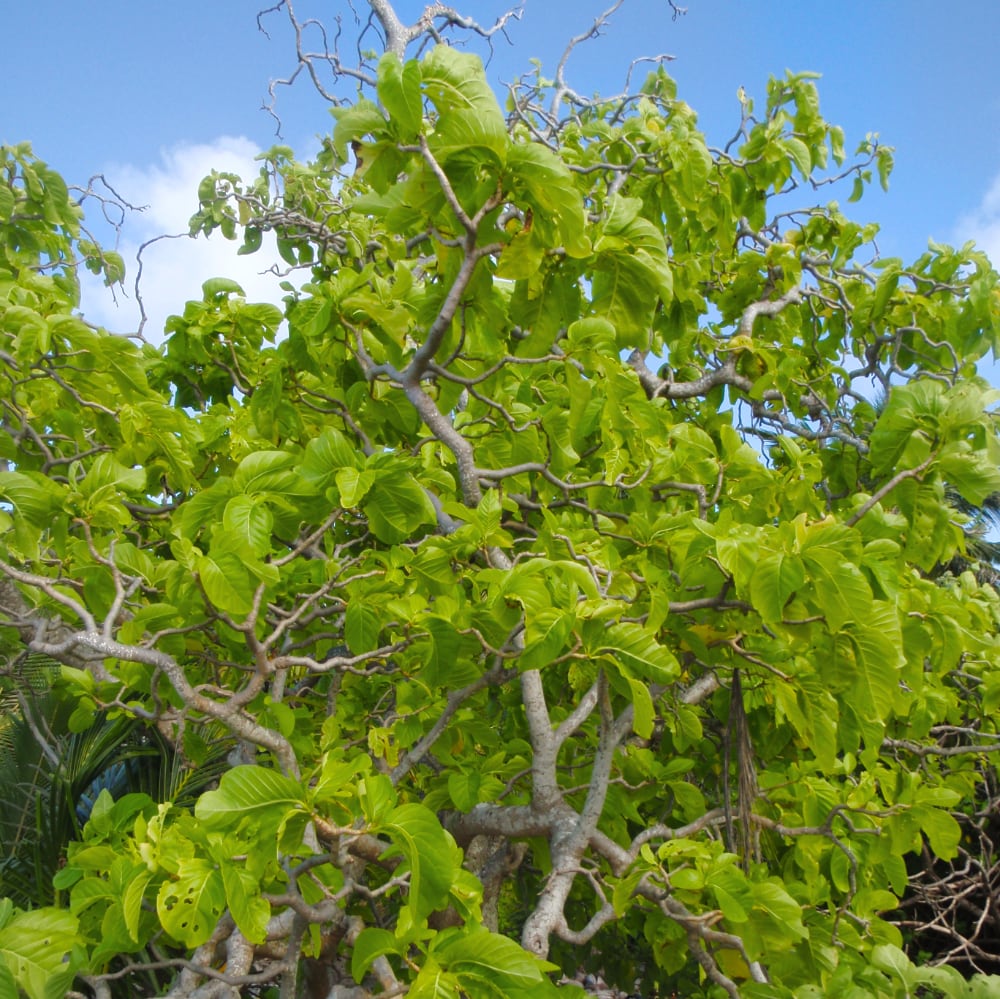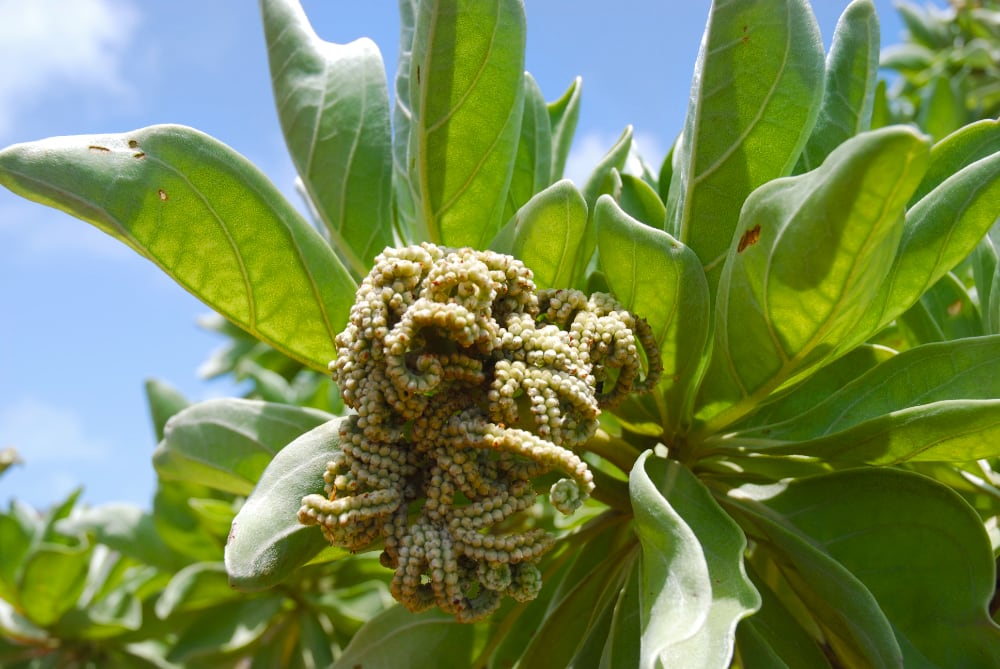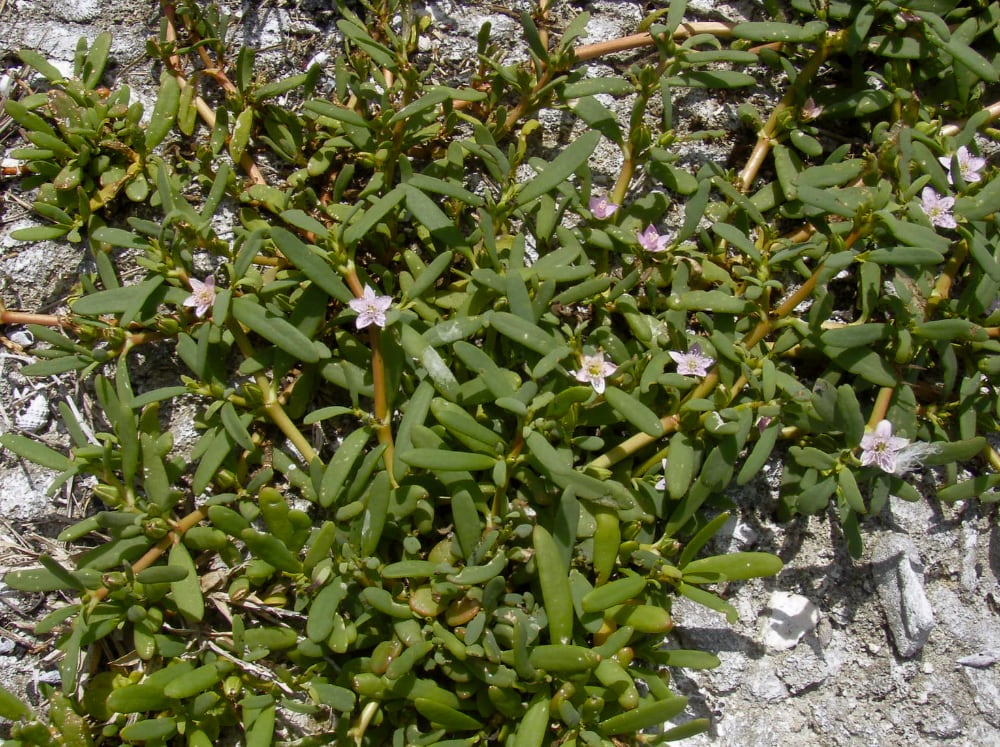Plants
Pulu Keeling National Park’s isolated location has attracted a unique collection of plants.
Untouched by humans until a few hundred years ago, the Cocos (Keeling) Islands could only be colonised by plants that spread via wind, the ocean or animals. As a result, North Keeling Island is home to a variety of ‘travelling’ species that has long fascinated biologists.
40 plant species have been recorded in the park, including several that are not found in the southern islands of the Cocos (Keeling) group.
The park has four main vegetation types: pisonia forest, octopus bush shrublands, tea shrub and ironwood thickets, and open grassy areas. Each of these ecosystems provides a habitat for Pulu Keeling’s large seabird population.
Pisonia forest
 Pisonia grandis
Pisonia grandis
Pisonia grandis is a flowering tree in the Bougainvillea family. It has smooth bark, thin leaves and green flowers. The flowers mature into sticky seeds that spread by attaching themselves to bird feathers.
Pisonia forests dominate North Keeling Island. The pisonia trees here are unusually tall, and many other species in these closed canopy forests grow significantly larger than they do on other Indian Ocean islands.
Pisonia forests are important nesting habitats for seabirds, including our tens of thousands of red-footed boobies.
Coconut trees (Cocos nucifera) are also common in these forests.
Octopus bush
 Octopus bush (Heliotropium foertherianum)
Octopus bush (Heliotropium foertherianum)
Octopus bush (Heliotropium foertherianum) is a flowering shrub in the borage family. It grows to around 3.5 m tall with a spread of about 5 m.
Octopus bush is common on the eastern shore of the island, especially on the crest of ridges. North of the former lagoon entrance it often occurs with cabbage bush (Scaevola taccada), a large, salt-loving bush that grows very close to the water’s edge.
Tea shrub and ironwood
 Ironwood (Cordia subcordata)
Ironwood (Cordia subcordata)
Tea shrubs (Pemphis acidula) thrive in North Keeling’s sandy soil, forming dense thickets around the edge of the lagoon.
They often occurs alongside ironwood (Cordia subcordata). Ironwood grows as a stunted shrub in other regions, but reaches the size of a large tree in Pulu Keeling National Park.
Ironwood was collected from North Keeling in large quantities during the first half of the 20th century. This sturdy wood was mostly used to build boats and for firewood.
Grassy areas
 Sea purslane (Sesuvium portulacastrum)
Sea purslane (Sesuvium portulacastrum)
North Keeling’s open grassy areas often have a covering of sea purslane (Sesuvium portulacastrum), a glossy green herb with tiny pink or purple flowers.
